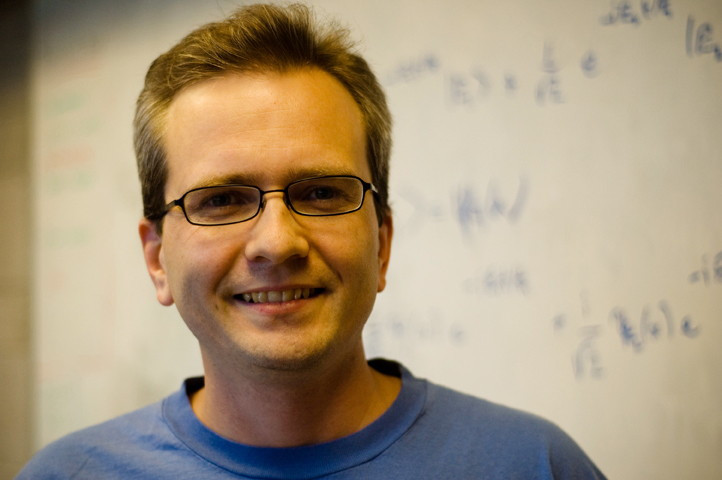Neutrons go cold, put university on map
Groundbreaking technology to be available to U of W physics students
Ever wonder what you could do with a jar of neutrons unbound from their proton partners? University of Winnipeg physics professor Jeff Martin wonders every day and has been given millions of dollars to show the world just how cool an ultracold neutron is.
“Anyone with a high-energy proton beam is interested in this,” Martin said.
Proton beam or not, international interest is high for this relatively new technology. It involves smashing protons at high speeds, separating them from their neutrons and supercooling the neutrons to a point where they can be contained and experimented with. Possible experiments include measuring the lifespan of a neutron and observing its gravitational effect.
“There’s a lot of people saying, ‘If we could only take this bottle of neutrons we could do some kick-ass experiments’ ... Our job is to provide the neutrons,” Martin said.
Currently the only sources of ultracold neutrons are in France, Japan and New Mexico. The sites are all experimental and Martin believes he can make a better one.
Martin is planning to build the world’s most concentrated source of ultracold neutrons at the TRIUMF National Laboratory for Particle and Nuclear Physics at the University of British Columbia.
“ We’re leading the world in this type of research.
Jeff Martin, U of W
The Spallation Ultracold Neutron Source is scheduled to be operational in 2013. Of the $10 million the project is expected to cost, $4.225 million was awarded to Martin this past summer from the Canada Foundation for Innovation, the largest grant ever awarded to a Manitoba academic by the foundation. Another $4 million has been donated by Japanese interests and $2 million from the TRIUMF National Laboratory. Relatively small funds have been donated by private industries and the Government of Manitoba.
Despite its location, Martin is confident students from the University of Winnipeg will be involved in both the building stages of the project and the experiments once it’s finished.
Martin said he always has undergraduate students working alongside him and the project will be a unique opportunity for physics students.
“Our students will very easily be able to have access to the facility,” Martin said. “We own this thing, we’re at the top ... We’re leading the world in this type of research.”
The Einstein-inspired Martin, who grew up close to Portage la Prairie and is a University of Manitoba grad, has always had his work take him away from home.
“I’d love to have a neutron source in Winnipeg ... if someone would like to build a nuclear reactor here,” Martin said. “But nobody’s going to give me that much money ... yet.”
Published in Volume 64, Number 10 of The Uniter (November 5, 2009)







